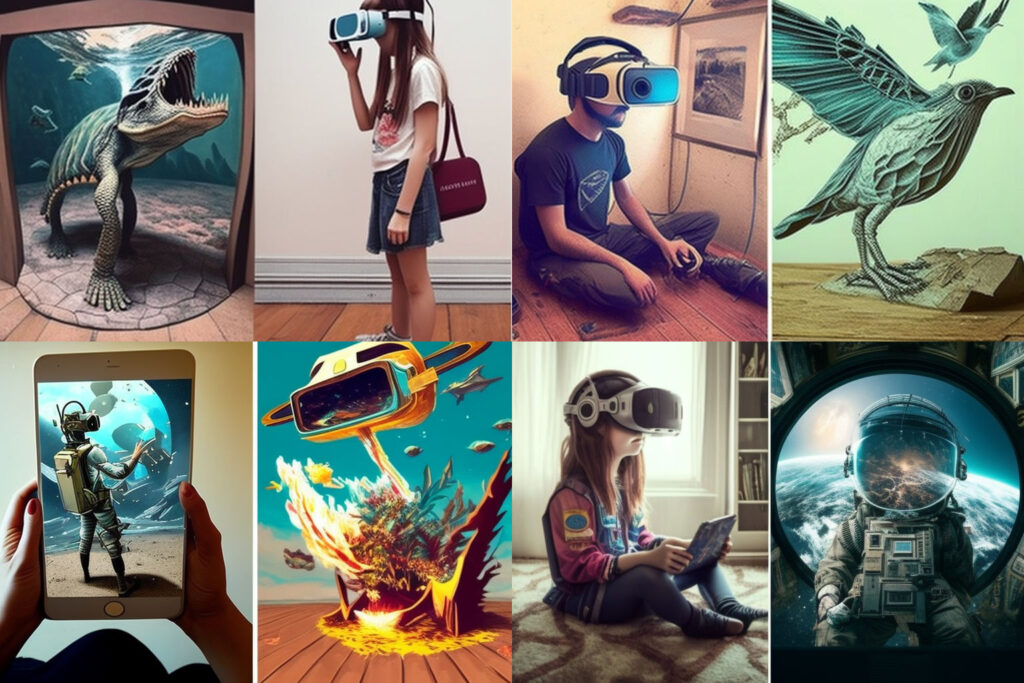Augmented Reality (AR) and Virtual Reality (VR) are two immersive technologies that have seen rapid growth and development in recent years. While they share some similarities, they also offer distinct experiences and applications. In this blog post, we will provide a comprehensive comparison of AR and VR, highlighting their differences and exploring their potential use cases in 2023.
Technology and User Experience
Augmented Reality enhances the user’s perception of the real world by overlaying digital information, such as images, text, or 3D models, onto the physical environment. AR is typically experienced through devices like smartphones, tablets, or AR glasses, allowing users to interact with the digital content while remaining aware of their surroundings.
Virtual Reality, on the other hand, creates a fully immersive environment that transports users to a different world or setting. VR experiences are usually delivered through headsets, which block out the user’s view of the real world and replace it with a computer-generated environment. Users can interact with the virtual environment using hand controllers or other input devices.
Applications
AR has a wide range of applications across various industries, including retail, healthcare, education, and manufacturing. Some notable use cases for AR include:
- Retail: AR apps enable customers to virtually try on clothing or preview furniture in their homes before making a purchase.
- Healthcare: Medical professionals can use AR to visualize patient data, plan surgeries, or guide medical procedures.
- Education: AR can provide interactive learning experiences by overlaying digital information on physical objects, such as textbooks or historical sites.
- Manufacturing: AR can assist workers with assembly processes or maintenance tasks by displaying real-time information and instructions.
VR, while also having applications in various industries, is often more focused on entertainment, training, and simulation. Some prominent VR use cases include:
- Gaming: VR gaming offers fully immersive experiences, transporting players into virtual worlds where they can interact with their surroundings and characters.
- Training and Simulation: VR can provide realistic training environments for industries such as aviation, military, and healthcare, where real-world training can be expensive or hazardous.
- Mental Health and Wellness: VR can be used for therapeutic purposes, such as exposure therapy for phobias or anxiety disorders, and as a tool for relaxation and meditation.
Hardware and Cost
AR devices range from widely available smartphones and tablets to specialized AR glasses, such as the Microsoft HoloLens. While AR glasses tend to be expensive, the proliferation of smartphones makes AR experiences more accessible and affordable for the general public.
VR hardware includes a variety of headsets, from high-end devices like the Oculus Rift and HTC Vive to more affordable options such as the Oculus Quest and PlayStation VR. While VR headsets have become more affordable over time, they still require a significant investment compared to AR experiences on smartphones.
Conclusion
Augmented Reality and Virtual Reality are two distinct technologies that offer unique experiences and applications. AR enhances the real world with digital information, while VR creates fully immersive virtual environments. Both technologies have a broad range of applications across various industries, with AR often focusing on enhancing real-world experiences and VR catering to entertainment, training, and simulation. As these technologies continue to evolve in 2023, we can expect to see even more innovative applications and advancements that will shape the future of immersive experiences.



